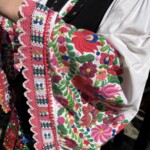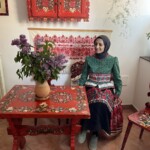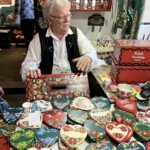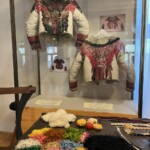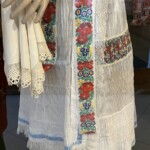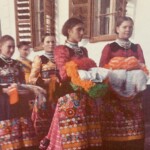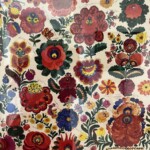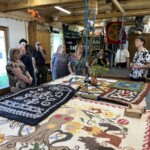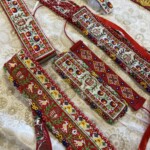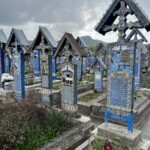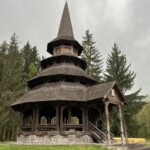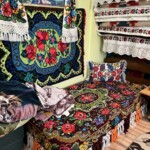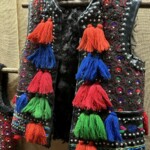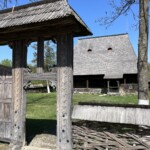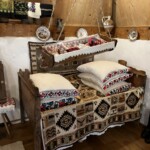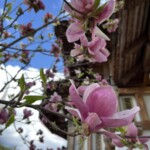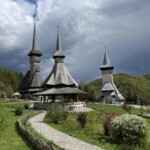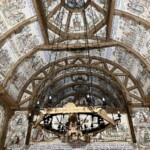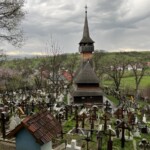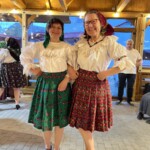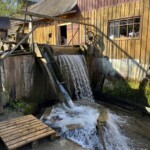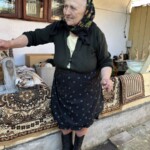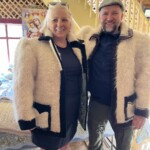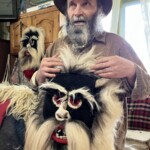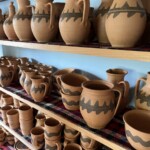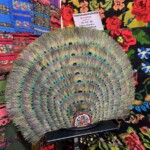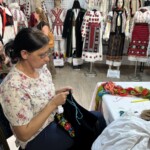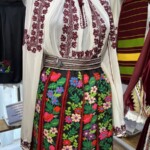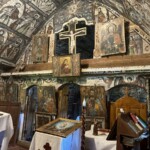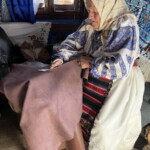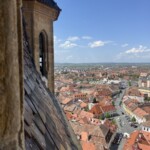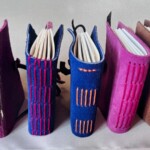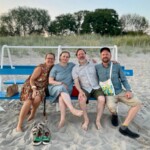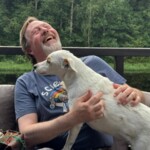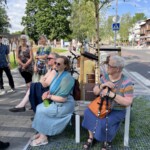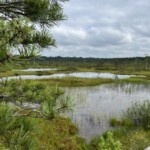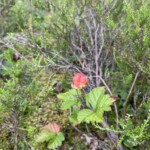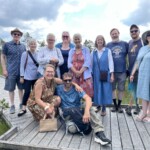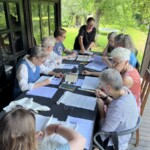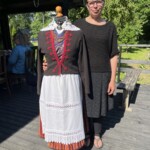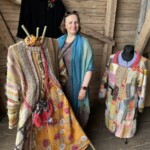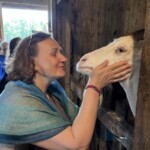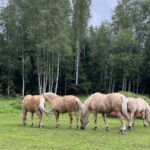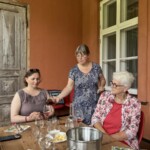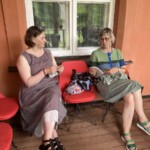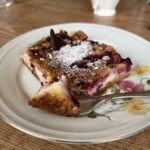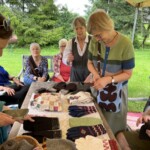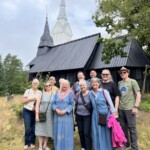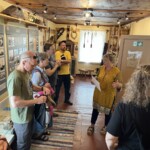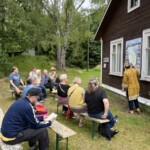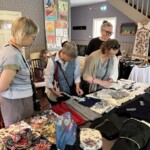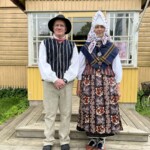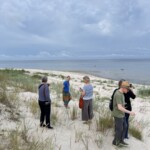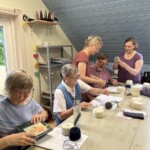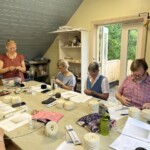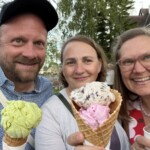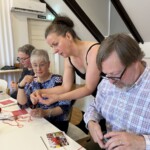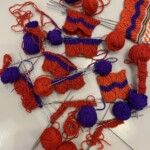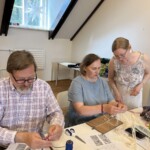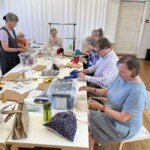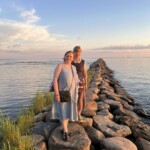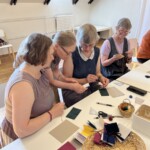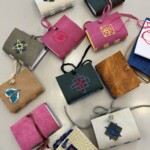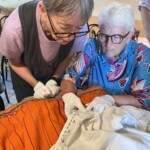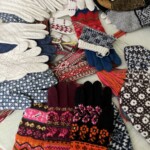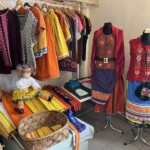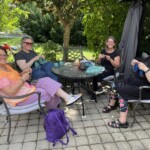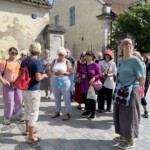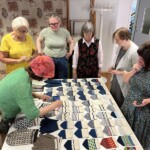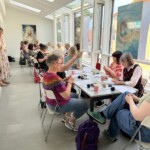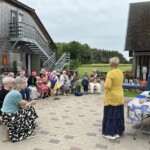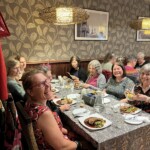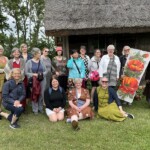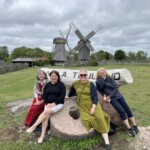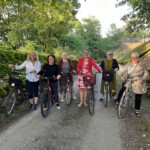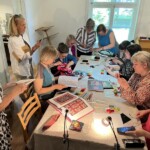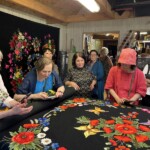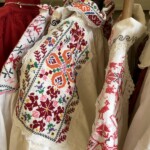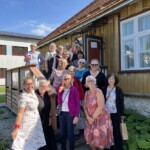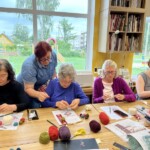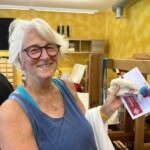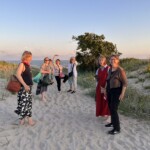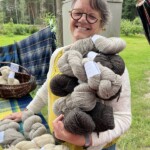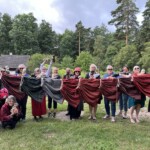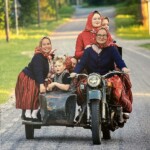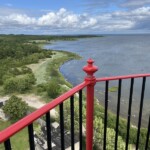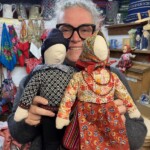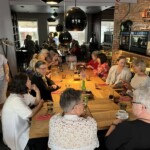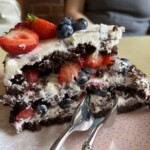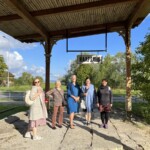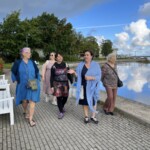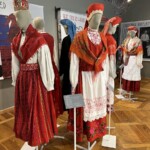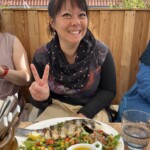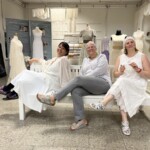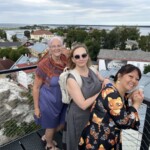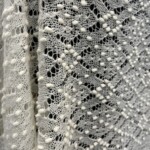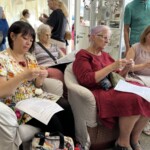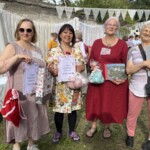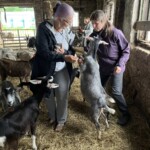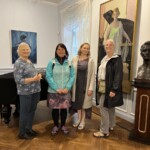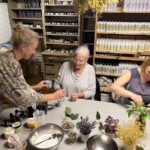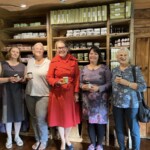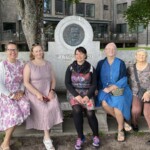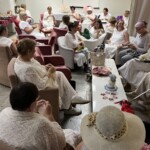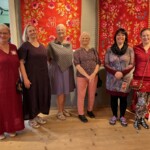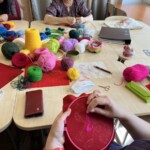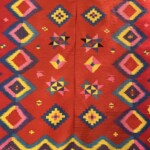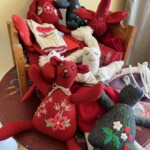Romania is an Authentic Colorful Handicraft Paradise
We had a wonderful visit to Romania in April 2025, enjoyed their hospitality, breathtakingly gorgeous nature and colorful clothes. Romania is a very big country with so much to see and experience. Let me tell you how we did it.
DAY1: arrived in Budapest, as Maramures is in the North-West corner of Romania.
DAY2: our first stop in Romania was Satu Mare. There is a magnificent center for crafters called Borókagyökér Egyesület, which translates into a Juniper Root Club. After touring in their premises and seeing some masters at work, we had a lovely lunch and continued our trip to Maramures.
The Merry cemetery is a big tourist attraction. Nearby is a lovely Peri-Săpânţa Monastery, with its amazing architecture. For example, the tallest wooden church in the world – 75 m high 14th century miracle.
DAY3: Romania is colorful. After really nice breakfast, we headed to the Ethnographic Museum of Sighetu Marmației. We were welcomed by the museum worker who turned out to be the researcher of a local ethnographic technologies. Then we visited to the Maramureșean Village Museum. Glourious day, beautiful buildings and surroundings made it a memorable experience. After tasty lunch at a traditional Romanian restaurant we started driving towards the Bârsana Monastery. It is a big complex of wooden buildings. For dinner, we arrived at our accommodation in Săcel, where we are staying at Pensiunea Casa Camelia. Our hosts are so warm and pleasant, after dinner we tried on some traditional Romanian clothing and sang some Seto songs.
DAY4: Romania is so crafty. We visited so many masters and saw amazing amount of beautiful handicraft. Let me tell you all about it. Our morning started with an ancient washing machine. There was a watermill, where some of the water went straight into huge bowl. Next we visited a world-famous mask maker. Pottery studio, where local clay was used, finished our morning session.
After a tasty cabbage roll lunch, we headed towards Salva. Virginia Linul has created an empire of Romanian traditional clothing in this little town. The second-floor museum area took our breath away once we entered the craft wonderland.
A small, small village nearby called Runcu Salvei with its adorable surroundings, charmed us. We found an ancient wooden church there which was open for us so we could admire its interior. Also, a beautiful old lady who made traditional shoes welcomed us and showed us some of her craft.
DAY5: Romania has many museums. Today we drove to Sibiu, an old city in Transylvania. First we visited an open air museum ASTRA, which had a few hundred old buildings. Then we had some free time in the old town of Sibiu. We climbed the highest church tower and had a magnificent view over the nice red roofs. In the evening, we drove to Alba Iulia, where we are staying the night. After the dinner, we had a night walk in the downtown.
DAY6: Romania has many mountains. Today we discovered Apuseni mountains. We drove from Alba Iulia to Rosia Montana via a picturesque road through mountains. Rosia Montana is a small historic gold mining village currently in UNESCO heritage list. Next to it is located Roșia Poieni open pit copper mine. We hiked up the hill to see this huge hole in the Earth. Our afternoon fun was in a small village called by Baita.
DAY7: Romania has many castles. Today we discovered Corvin Castle in Huneadora. It is a Gothic-Renaissance castle and is considered one of the largest castles in Europe and is featured as one of the Seven Wonders of Romania.
For lunch, we drove to a wonderful local food restaurant Paso in Timisoara. After that, we had a couple hours to walk around the old town. At the same time there were biking tournament in downtown with lots of fun activities. Fine dining in Arad finished our lovely trip.
In 2026 we go back to Romania to discover some more, a different but as interesting region. Come tour with us! Please write us at kyllikoppo@protonmail.com for some info and registration.
